I should imagine there aren’t many digital photographers who don’t run out of space every now and then; The dreaded card full symbol is enough to get anyone muttering a few swear words to themselves. Luckily, Epson has come to the rescue with a handy little storage viewer that fits in just about any camera bag. Now there’s no need to panic when you’re down on those last few megabytes of disk space!
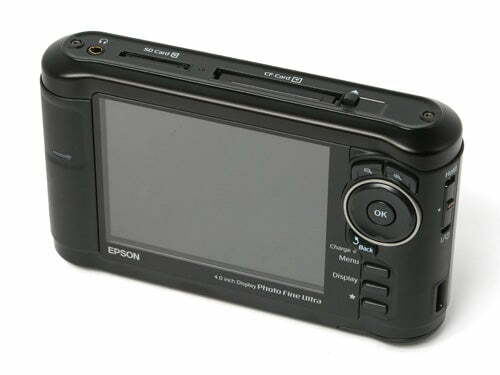
The P-5000 is a versatile, fairly well put together package that goes beyond a simple image viewer. It offers a variety of card formats, video and audio capabilities, and a respectable list of handy features, including a gorgeous HD LCD screen, a fast 80 gigabyte hard drive, a rechargeable Li-On battery for long life, and a high USB High-speed 2.0 connection for comprehensive storage and management functions for PC and Mac operating systems.
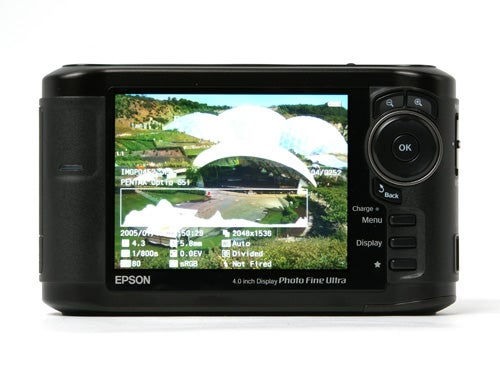
Physically, the device is intuitive to use, comfortable to hold as most of the work is done with the right thumb. The two memory card slots are usefully placed on the top for easy access along with the headphone jack. The rest of the connection hardware is under flush-fitting rubber tabs on the left edge. These consist of an A/V output, two high-speed USB2.0 ports, a power supply socket and a reset button. An interesting point is the placement of the speaker. Unfortunately, it’s on the underside and nestles neatly within the confines of a remarkably soundproof rim. If you want to enjoy movies or music, you need your headphones. The 4-inch, 640×480 resolution screen is probably one of the nicest I’ve seen on a device of this size. Using low-temperature polysilicon TFT technology, the quality of this display is superb, colors are warm and well-defined, while grayscale has excellent contrast and sharp, crisp edges.
The range of media supported by the P-5000 is impressive overall, but leaves a little to be desired on the photographic side. It loads JPEG and RAW files with ease (with limitations, see specs), but surprisingly there’s no support for TIFF files, or any other still image format for that matter. Video formats, on the other hand, include most MPEGs, DivX, AVC, Windows Media Video, Motion JPEGs and even the new H.264 format.
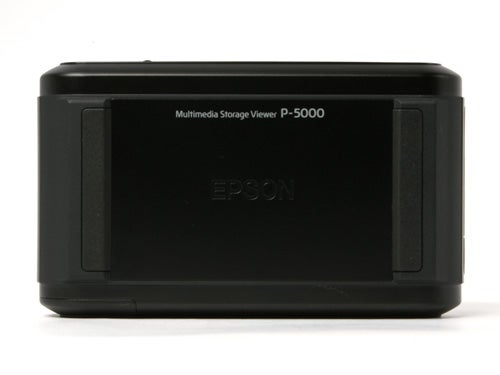
On the audio side, there is the standard MP3 and AAC, as well as Windows audio. Memory card support is limited to two slots, one Secure Digital and one Compact Flash. However, in fact, you can use SD/SDHC, Multimedia, Compact Flash and Microdrive formats. Other cards can be used, but only with an appropriate adapter. The only limit is the multimedia card, which is limited to one gigabyte.
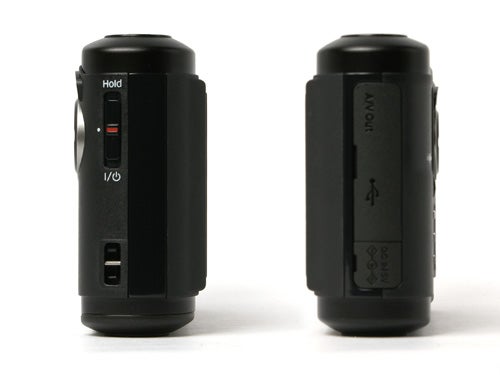
To get an accurate picture of the comparable speeds, I ran a series of read/write tests, the results of which are shown here. To be honest, I was a bit disappointed with the result. Granted, there’s not a lot in it as you can see, but if I were to spend anything under £500 on a dedicated machine like this I’d expect at least similar results to what I get from my home PC or laptop. The tests included reading and writing half a gig chunks of data, one with numerous small JPEG files, one with several large video files, and another with an average mix. I didn’t expect a huge difference between the two considering they do the same job in both cases, transferring data to and from a hard drive and a memory card.

However, the data speaks for itself, the P-5000 performed slower in every test, with the exception of the Microdrive, which wrote faster in all three tests. Unless you’re too concerned about access times or don’t have access to a computer these numbers won’t tell you much, after all they’re just for comparison, but since you can’t get a decent laptop for much more than the cost of the P- 5000 it is worth considering.
This brings us straight to general connectivity. The device features two high-speed USB ports that can be used for a variety of tasks. The first, a “host” connection, is used to connect a computer or camera. The second connection, “Device”, is for using a PictBridge printer or an external storage device. Which is odd, because surely the P-5000 IS an external storage device? To use the computer support, you need Windows 2000 Pro, XP Pro, XP Home or Mac OS X (10.2 or higher). The software itself does not come on a CD-ROM as expected, but as an executable file on the unit’s drive. After some tinkering I got the application working. It does what it says on the box, transfers files. It has no notable features, certainly nothing notable.
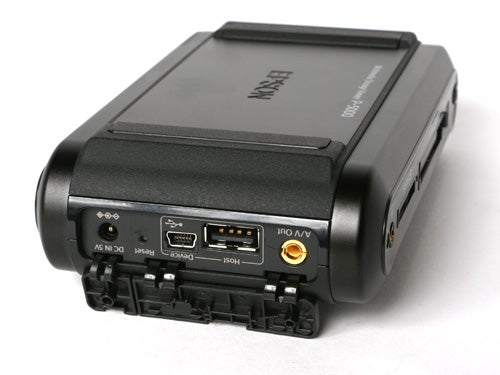
The control system for the P-5000 is similar to the software, reasonable and functional. It consists of clear, text-based menus that include: My Music, View Rated Files, My Videos, My Photos, Backup Files, Memory Card, USB Devices, and Settings. Most entries are simple folder navigation menus that give you access to files. Videos and still images are all displayed as thumbnails and highlighting and pressing OK displays that image or video. The Memory Card option allows you to back up or browse an inserted card. It would have been nice to have seen a little imagination in the design, but it does the job. Just.
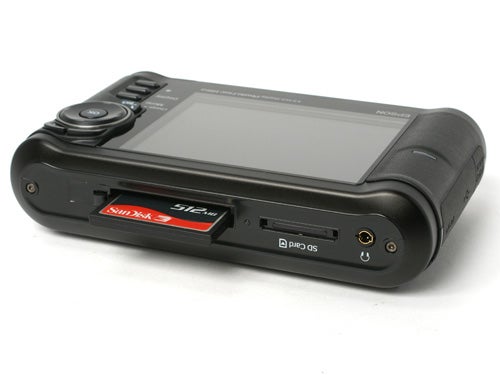
“‘Verdict”‘
There’s no doubt that the P-5000 is a handy, versatile viewer that performs well enough. Its hardware is up-to-date and powerful, uses fast USB 2.0 technology and supports the most common card formats. The heart of the machine, the screen, is beautiful, sixteen million colors in high definition look really good. The video is smooth and crisp, with an excellent choice of formats. Audio is the same, nice and clean with a good frequency response. I would have liked to see more photographic formats, especially TIFF. What really lets the device down in my opinion is the software, both the OS and the PC/Mac software could be so much better. If as much effort had been put into the OS as into the hardware, it would be a whole different beast.
—-


